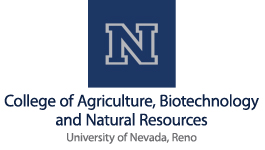Team:Nevada/misc
From 2010.igem.org
| Line 16: | Line 16: | ||
| - | <p> | + | <p> <html> |
<a href="https://2010.igem.org/Image:IMG_6031.JPG"><img src="https://2010.igem.org/Image:IMG_6031.JPG" class="shadow" style="float:left;width:170px;margin:10px"></a> | <a href="https://2010.igem.org/Image:IMG_6031.JPG"><img src="https://2010.igem.org/Image:IMG_6031.JPG" class="shadow" style="float:left;width:170px;margin:10px"></a> | ||
</html>These cells can therefore be utilized as a quick proof-of-concept test model before moving synthetic constructs into plants of interest. We also aim to produce an iGEM-compatible plant-specific plasmid, several stress-inducible plant promoters, reporter genes containing Kozak sequences (ribosome binding sites) and terminators that conform to BioBrick standards. Lastly, we hope to measure the induction of these stress promoters in real-time by performing a fluorometry assay in which stress will be applied to NT cells and fluorescent output by a reporter (GFP) will be measured to detail induction in real time. This method has a distinct advantage over microarrays since microarrays are only one ‘snapshot’ in time.</p> | </html>These cells can therefore be utilized as a quick proof-of-concept test model before moving synthetic constructs into plants of interest. We also aim to produce an iGEM-compatible plant-specific plasmid, several stress-inducible plant promoters, reporter genes containing Kozak sequences (ribosome binding sites) and terminators that conform to BioBrick standards. Lastly, we hope to measure the induction of these stress promoters in real-time by performing a fluorometry assay in which stress will be applied to NT cells and fluorescent output by a reporter (GFP) will be measured to detail induction in real time. This method has a distinct advantage over microarrays since microarrays are only one ‘snapshot’ in time.</p> | ||
Revision as of 06:21, 15 October 2010
NT Cell Transformations
These cells can therefore be utilized as a quick proof-of-concept test model before moving synthetic constructs into plants of interest. We also aim to produce an iGEM-compatible plant-specific plasmid, several stress-inducible plant promoters, reporter genes containing Kozak sequences (ribosome binding sites) and terminators that conform to BioBrick standards. Lastly, we hope to measure the induction of these stress promoters in real-time by performing a fluorometry assay in which stress will be applied to NT cells and fluorescent output by a reporter (GFP) will be measured to detail induction in real time. This method has a distinct advantage over microarrays since microarrays are only one ‘snapshot’ in time.
|
|}
We would like to thank the following sponsors for their support in helping us make this project possible.
Much thanks to the [http://www.cabnr.unr.edu/Students/Majors.aspx Departments of Biochemistry and Biotechnology] and the [http://www.cabnr.unr.edu/Students/Glance.aspx College of Agriculture, Biotechnology and Natural Resources] for their encouragement and support. Thank you [http://www.unr.edu/inbre/ Nevada INBRE] for over $6,000 in support for supplies and registration costs.
Thank you to Associated Students of the Univeristy of Nevada for supporting our fund raising efforts.
Thank you to [http://www.promega.com/Catalog/CountrySelect.aspx?returnurl=/Default.asp Promega Co.] for free enzyme donations.
Thank you to [http://www.invitrogen.com/site/us/en/home.html?cid=covinvggl89100000002336s& Invitrogen Co.] for a discount on our Vector NTI program.

| 
| 
| 
| 
|
|---|
 "
"
